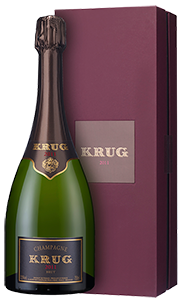Filter by
- An exquisite vintage Champagne with notes of citrus, creamy peach and toasty brioche complexity£34.99 per bottleSAVE £10.01
- Made entirely from Chardonnay, Laurent-Perrier’s Blanc de Blancs is a Champagne of great finesse£89.99 per bottle
- Fine, Gold-medal, Pinot Noir-focused Vintage Brut from a 160-year-old family-owned Champagne house£59.99 per bottle
- A special festive edition of Charles de Cazanove’s fine Blanc de Noirs Champagne£35.00 per bottle
- Champagne Laurent-Perrier's magnificent Cuvée Rosé Brut in a beautiful, ribbon-designed bottle£85.00 per bottle
- Give the gift of sensational drinking with this stunning Laurent-Perrier gift set£75.00SAVE £8.00
- This world-famous 96-point Champagne remains a fitting tribute to Pol Roger's most devoted customerfrom £180.00 per bottleSAVE UP TO £30.00
- From one of the oldest Champagne houses, a fine rosé fizz in a striking all-senses bottle£32.00 per bottleSAVE £2.00
- Produced only in the best vintages, this is an exquisite 96-point Champagnefrom £180.00 per bottle
- Superb, 96-point, Trophy-winning Blanc de Blancs Champagne – pure fruit elegance with toasty length£49.99 per bottle
- Champagne Laurent-Perrier's iconic Cuvée Rosé Brut with a pair of delicate flutes£115.00
- Fine Extra Brut Champagne in a beautiful Art Nouveau bottle – a gorgeous gift£40.00 per bottleSAVE £2.00
- A fine celebration Champagne. Great fruit finesse, brioche notes and gentle bubbles. Organic too£36.00 per bottle
- 100-point, 26th iteration of Grand Siècle, Laurent-Perrier’s vision of Champagne perfection£190.00 per bottle
- All mineral-fresh Chardonnay and long lees ageing for complexity in this fine Champagne in magnum£80.00 per bottle
- £44.99 per bottle
- With 96 points, this flagship cuvée from top Champagne house Deutz is fresh, intense, complex, longfrom £120.00 per bottleSAVE UP TO £45.00
- from £300.00 per bottleSAVE UP TO £80.00
- An exquisite Grand Cru Champagne awarded 95 points by James Sucklingfrom £95.00 per bottle
- Magnificent Blanc de Noirs Champagne from the great house of Bollinger, with a deserved 94 pointsfrom £85.00 per bottleSAVE UP TO £25.00
- Superb Pinot-based Champagne with 30% reserve wine from the historic house of Piper-Heidsieck£95.00 per bottle
- from £300.00 per bottleSAVE UP TO £75.00
- Produced only in the best vintages, this is an exquisite 96-point Champagne – perfect in magnumfrom £410.00 per bottle
- A prestigious 94-point Champagne from the acclaimed Gimonnet familyfrom £75.00 per bottle
































